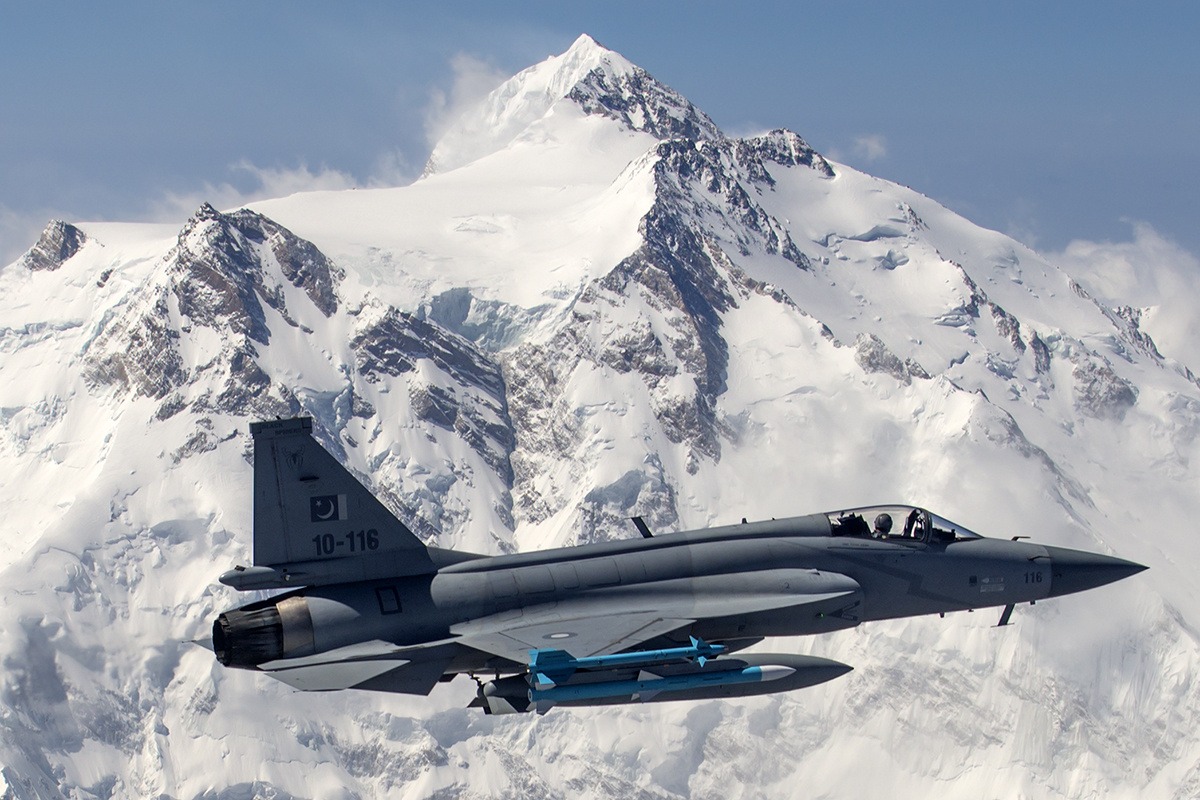The JF-17 ‘Thunder’ is not only the mainstay of the Pakistan Air Force (PAF) but also the country’s flagship defense export product. In the past, the China-Pakistan joint production has often been dubbed unreliable owing to the series of crashes it suffered and the technical faults it encountered.
Hence, Pakistan tried to hush up another crash of the fighter jet on June 5, but Martin Baker, the ejection seat manufacturer, let the cat out of the bag.
The crash of JF-17 Block 2 was not reported in the Pakistan media as well.
However, Martin Baker’s post on X on June 11 was the end of this hushing game. “On Wednesday, 5th June, a Pakistan Air Force JF-17 Block 2 aircraft crashed near the Jhang district. The pilot successfully ejected using the Martin-Baker PK16LE Seat,” the post read.
With this, the aircraft seat manufacturer said the lives saved by their seats tallied at 7,723. The confirmation came nearly a week after the crash.
Martin Baker reports all the ejections. Videos of the crash surfaced on social media the previous week, but PAF and Pakistani media remained tight-lipped about it.
A Pakistan Air Force JF-17 fighter jet crashed in Jhang district on June 5, 2024, due to a technical glitch. The pilot successfully ejected. #PakistanAirForce #JF17 #PlaneCrash pic.twitter.com/xYePhoXdLb
— Pakistani Index (@PakistaniIndex) June 11, 2024
JF-17, Joint Fighter-17, has often been dubbed the successor to F-16 in PAF’s fleet. The crash came not even a month after it bagged a landmark deal to provide 12 JF-17 Thunder Block III fighter jets to the Iraqi Air Force. Once the deal comes to fruition, Iraq will be the fourth or fifth customer of the JF-17 fighter jets.
Besides Pakistan, the fighters have already been acquired by Nigeria and Myanmar, and Azerbaijan has finalized the deal to acquire them. In the run-up to the Iraqi deal, PAF’s Air Chief Marshal Zaheer Ahmed Babar tried to take the Iraqi defense officials into confidence on the technical prowess of JF-17 aircraft.
The JF-17 Thunder combat aircraft was jointly developed by the Pakistan Aeronautical Complex and China’s Chengdu Aircraft Industry Corp. After its first flight in 2003, JF-17 airframes were initially produced solely in China. Presently, Pakistan manufactures 58 percent of the aircraft, with the remaining 42 percent produced in China.
The JF-17 Thunder is a single-engine, lightweight, multi-role combat aircraft with a Chinese airframe and Western avionics powered by a Russian engine. PAC Kamra has delivered nearly 120 JF-17 Block I and II fighter jets to the PAF since 2009.
Indian Air Force ‘Prepares’ For China Clash; Upgrades Airbases, Develops New Runways To Check PLAAF
Troubled Thunder
JF-17s tragic flaw is said to be its engine. The aircraft was initially powered by a Russian RD-93, and even the Chinese Air Force found it lacking and did not induct it into its fleet.
Since its induction in PAF in 2007, it has seen a slew of crashes. The aircraft has been grounded several times due to issues like cracks in guide vanes, exhaust nozzles, and flame stabilizers.

The Chinese then offered their local ‘unproven’ WS-13 engine to JF-17 operators, which was refused by Pakistan for their Block-3 JF-17 fighter jets. Unlike the GE-404 engine, which powers many military aircraft globally with an unblemished record, the unproven WS-13 engine of China is riddled with reliability issues. The unreliable engine has made JF-17s hazardous for the pilot’s safety. The enhancements in the Block III variant extend to engine upgrades.
Myanmar, the first country besides Pakistan to buy JF-17s, was forced to ground its fleet due to technical malfunctions. Reports suggest the reason behind the grounding in Myanmar was that the JF-17’s airframe reported “vibration issues.”
The Irrawaddy Times notes: “The airframe is vulnerable to damage, especially in its wingtips and hardpoints, when the aircraft encounters strong gravitational forces, according to a former pilot of the Myanmar Air Force.”
The critical part of the JF-17 avionics is the China-made KLJ-7 Al radar, which has poor accuracy and maintenance problems, analysts say. The aircraft does not even have an effective beyond-visual-range (BVR) missile or airborne interception radar.
According to a Myanmar media report: “Malfunction of the Weapon Mission Management Computer has caused launch zones of BVR air-to-air missiles to shrink during combat exercises.”
Pakistan Looks To Boost Export
Many countries, such as Argentina, Malaysia, Qatar, Saudi Arabia, Sri Lanka, and Nigeria, have shown interest in the relatively cheap jet. Argentina recently, under pressure from the US, turned down the JF-17s and opted for second-hand F-16s for its air force. Pakistan and India were locked in intense competition to sell their respective fighter jets in the country.
Nigeria, which already operates three JF-17s, is looking to induct more fighter jets in its inventory. Here, too, Indian Light Combat Aircraft ‘Tejas’ and JF-17 are the main contenders in the fray.
Nigeria is looking to procure 15 fighter jets to replace its obsolete fleet of Chengdu F-7NI. The existing fleet of Chinese fighter jets gives the Chinese offer an unsaid advantage. Both LCA ‘Tejas’ (Brilliance) and JF-17 ‘Thunder’ are single-engine multi-role combat aircraft.
- Ritu Sharma has been a journalist for over a decade, writing on defense, foreign affairs, and nuclear technology.
- The author can be reached at ritu.sharma (at) mail.com
- Follow EurAsian Times on Google News